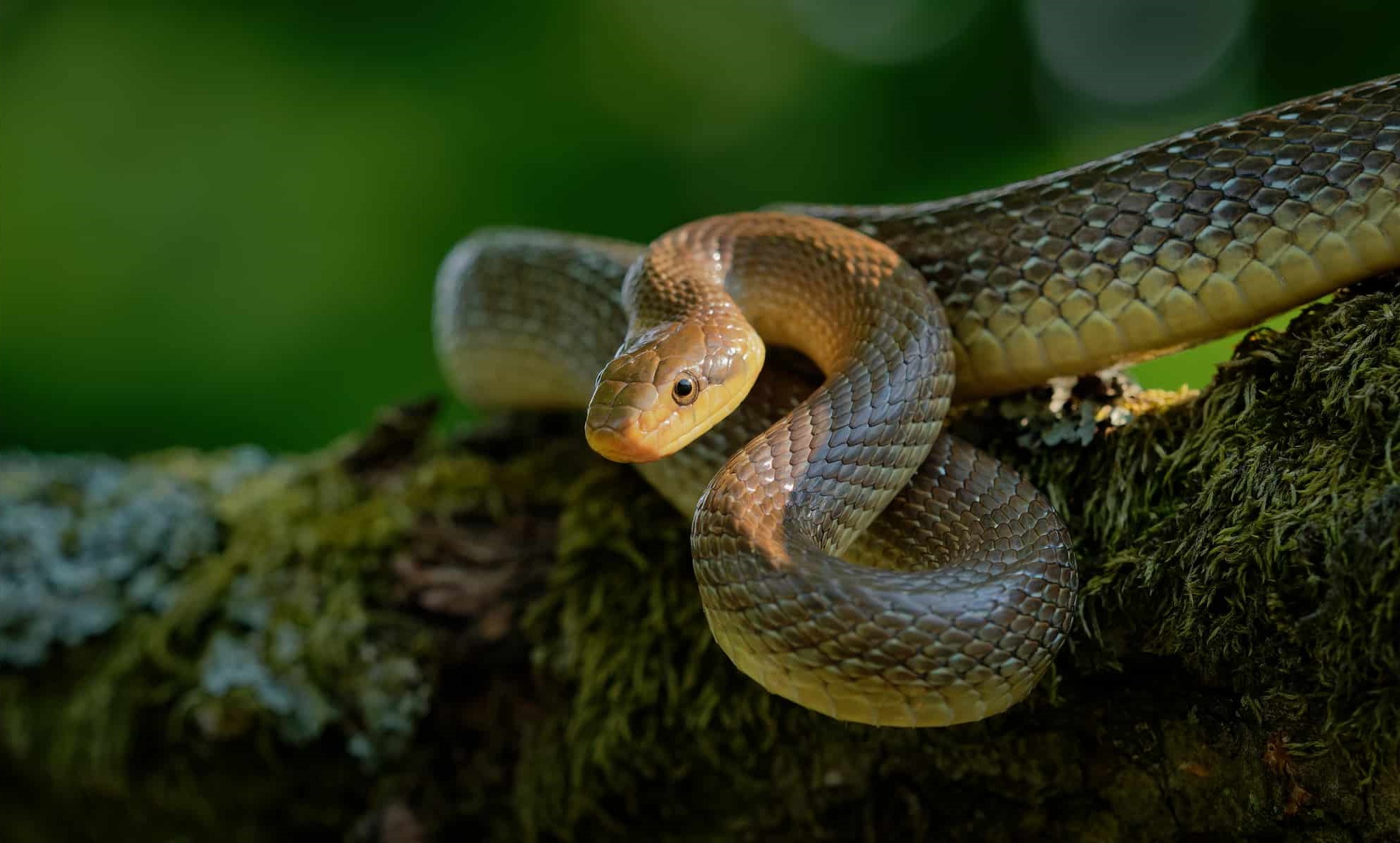
The Aesculapian snake, also known as the Aesculapian rat snake, is a fascinating creature that has captivated the attention of animal enthusiasts and researchers alike. With its long and slender body, striking colors, and unique behaviors, this species stands out among its serpent counterparts. Native to parts of Europe, including Italy and the Balkan Peninsula, the Aesculapian snake has a rich history and a number of extraordinary characteristics that set it apart. In this article, we will explore 13 intriguing facts about this captivating reptile, shedding light on its impressive abilities, mysterious habits, and important role in its ecosystem. So, let’s slither into the mesmerizing world of the Aesculapian snake!
Key Takeaways:
- The Aesculapian Snake is a non-venomous, impressive climber, and can grow up to 6 feet long. It lives for a long time and is active during the day, making it a fascinating creature to study.
- This snake has a special place in Greek mythology and medicine, and it coexists peacefully with humans. While not threatened, habitat destruction can pose risks to its populations.
Natural Habitat and Range
The Aesculapian Snake, also known as Zamenis longissimus, is native to Europe. It can be found in various habitats, including forests, woodlands, and rocky areas.
Impressive Length
One of the most remarkable characteristics of the Aesculapian Snake is its length. It can grow up to an impressive 6 feet (1.8 meters) on average, with the record length reaching nearly 8 feet (2.4 meters)!
Non-Venomous
Unlike many other snake species, the Aesculapian Snake is non-venomous. It is completely harmless to humans, making it a popular species to study and observe in the wild.
Long Lifespan
The Aesculapian Snake has an extraordinarily long lifespan. It can live up to 25 years in the wild, and with proper care and captivity, it can even exceed 30 years!
Excellent Climbers
These snakes are skilled climbers and often take advantage of their ability to ascend trees and shrubs. They use their powerful muscles and smooth scales to move effortlessly through the branches.
Prey and Feeding Habits
The Aesculapian Snake primarily feeds on small mammals, such as rodents, birds, and their eggs. They are particularly fond of climbing bird nests in search of a delicious meal.
Mating Rituals
During the mating season, male Aesculapian Snakes engage in intense competition. They engage in combat, intertwining their bodies and twisting in an effort to establish dominance and win the right to mate with a female.
Active During the Day
The Aesculapian Snake is diurnal, meaning it is active during the day and rests at night. This behavior allows them to take advantage of the warmth and ample sunlight for thermoregulation.
Egg-Laying Species
These snakes are oviparous, meaning they lay eggs. Females typically lay between 5 to 20 eggs in warmer months, and the eggs hatch after an incubation period of approximately two to three months.
Predators
While the Aesculapian Snake is not venomous, it still has its fair share of predators. Birds of prey, such as owls and hawks, are known to feed on these snakes, along with certain mammalian predators like foxes and martens.
Conservation Status
The Aesculapian Snake is generally not considered to be a threatened species. However, habitat destruction and fragmentation can pose risks to their populations, particularly in urbanized areas.
Cultural Significance
The Aesculapian Snake has a special place in Greek mythology and medicine. It is associated with the staff of Asclepius, the Greek god of healing and medicine, giving this snake a symbolic role in ancient traditions.
Human Interactions
Due to its harmless nature, the Aesculapian Snake often coexists peacefully with humans. It is commonly found in parks and gardens, sometimes even inhabiting historic buildings.
Conclusion
In conclusion, the Aesculapian snake is truly an extraordinary creature. From its large size to its unique ability to climb trees, this snake has captivated the curiosity of many animal enthusiasts. Its longevity and adaptability make it a resilient species that has stood the test of time.
Although it may resemble other snakes at first glance, the Aesculapian snake stands out with its impressive characteristics. From its powerful constricting abilities to its ability to regenerate lost body parts, this snake showcases the wonders of nature.
Whether you encounter an Aesculapian snake in the wild or learn about it in a zoo or educational setting, take a moment to appreciate its remarkable features and the important role it plays in the ecosystem. The Aesculapian snake is a true testament to the majesty of the animal kingdom.
FAQs
1. What is the size of an Aesculapian snake?
Adult Aesculapian snakes can reach an impressive length of up to 6 feet (1.8 meters).
2. Are Aesculapian snakes venomous?
No, Aesculapian snakes are not venomous. They are harmless to humans and primarily rely on constriction to subdue their prey.
3. Can Aesculapian snakes climb trees?
Yes, Aesculapian snakes are excellent tree climbers and are known for their ability to navigate branches and tree trunks with ease.
4. Do Aesculapian snakes have any predators?
Aesculapian snakes are generally free from natural predators due to their large size and impressive climbing skills. However, birds of prey and larger mammals may occasionally pose a threat.
5. Where can Aesculapian snakes be found?
Native to southeastern Europe and parts of Asia, Aesculapian snakes are commonly found in wooded areas, near water bodies, and in urban environments.
The Aesculapian snake's gentle nature, impressive climbing skills, and cultural significance make this species truly remarkable. But there's even more to learn about these fascinating reptiles! Delve deeper into the world of Aesculapian snakes by exploring the unique characteristics of the Italian subspecies. You'll be amazed by the additional insights and surprising facts that await you.
Was this page helpful?
Our commitment to delivering trustworthy and engaging content is at the heart of what we do. Each fact on our site is contributed by real users like you, bringing a wealth of diverse insights and information. To ensure the highest standards of accuracy and reliability, our dedicated editors meticulously review each submission. This process guarantees that the facts we share are not only fascinating but also credible. Trust in our commitment to quality and authenticity as you explore and learn with us.


